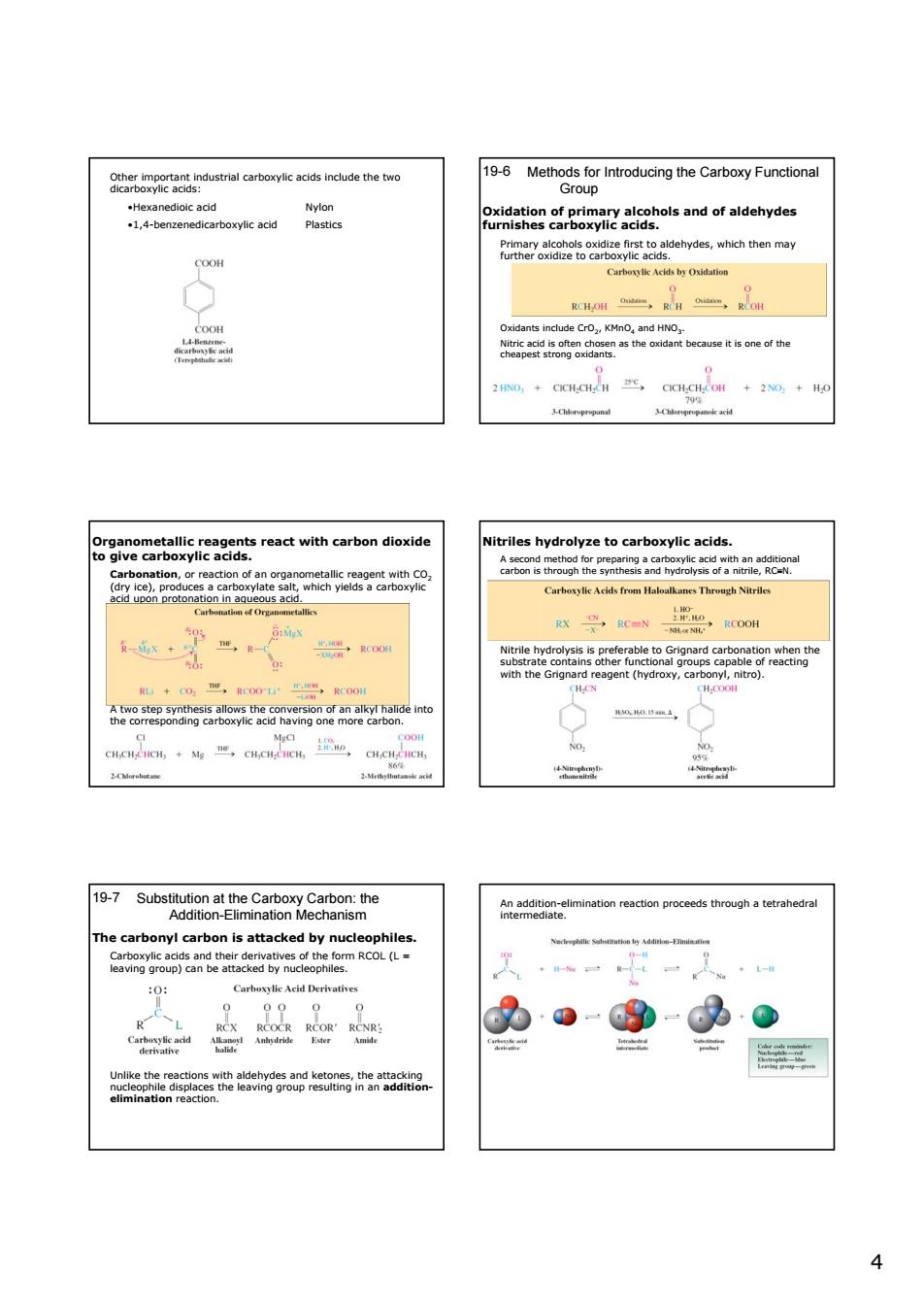正在加载图片...

aindude thetwo and of adeyde eich tenmay 30hnd aaneatoea2 s react with carbon dioxide es hydrolyze to carboxylic acids. +0o巴,00,R00m No. 19-7 SubstittionhCarboxy Carbon:e reacionpro eeds through a tet carbonyl edby 女点照品 为·0--·0 8 44 Other important industrial carboxylic acids include the two dicarboxylic acids: •Hexanedioic acid Nylon •1,4-benzenedicarboxylic acid Plastics Methods for Introducing the Carboxy Functional Group 19-6 Oxidation of primary alcohols and of aldehydes furnishes carboxylic acids. Primary alcohols oxidize first to aldehydes, which then may further oxidize to carboxylic acids. Oxidants include CrO2, KMnO4 and HNO3. Nitric acid is often chosen as the oxidant because it is one of the cheapest strong oxidants. Organometallic reagents react with carbon dioxide to give carboxylic acids. Carbonation, or reaction of an organometallic reagent with CO2 (dry ice), produces a carboxylate salt, which yields a carboxylic acid upon protonation in aqueous acid. A two step synthesis allows the conversion of an alkyl halide into the corresponding carboxylic acid having one more carbon. Nitriles hydrolyze to carboxylic acids. A second method for preparing a carboxylic acid with an additional carbon is through the synthesis and hydrolysis of a nitrile, RC≡N. Nitrile hydrolysis is preferable to Grignard carbonation when the substrate contains other functional groups capable of reacting with the Grignard reagent (hydroxy, carbonyl, nitro). Substitution at the Carboxy Carbon: the Addition-Elimination Mechanism 19-7 The carbonyl carbon is attacked by nucleophiles. Carboxylic acids and their derivatives of the form RCOL (L = leaving group) can be attacked by nucleophiles. Unlike the reactions with aldehydes and ketones, the attacking nucleophile displaces the leaving group resulting in an additionelimination reaction. An addition-elimination reaction proceeds through a tetrahedral intermediate